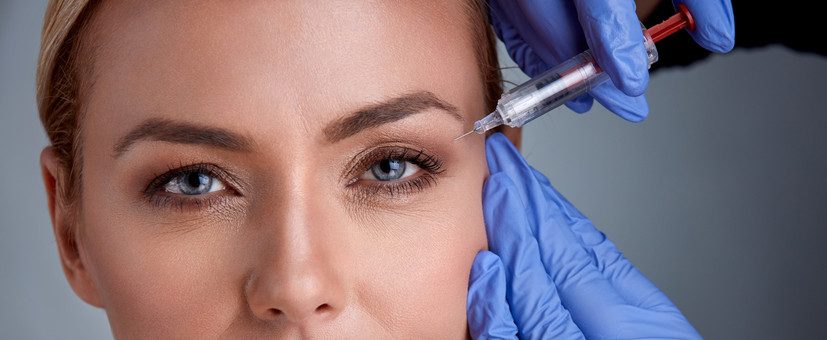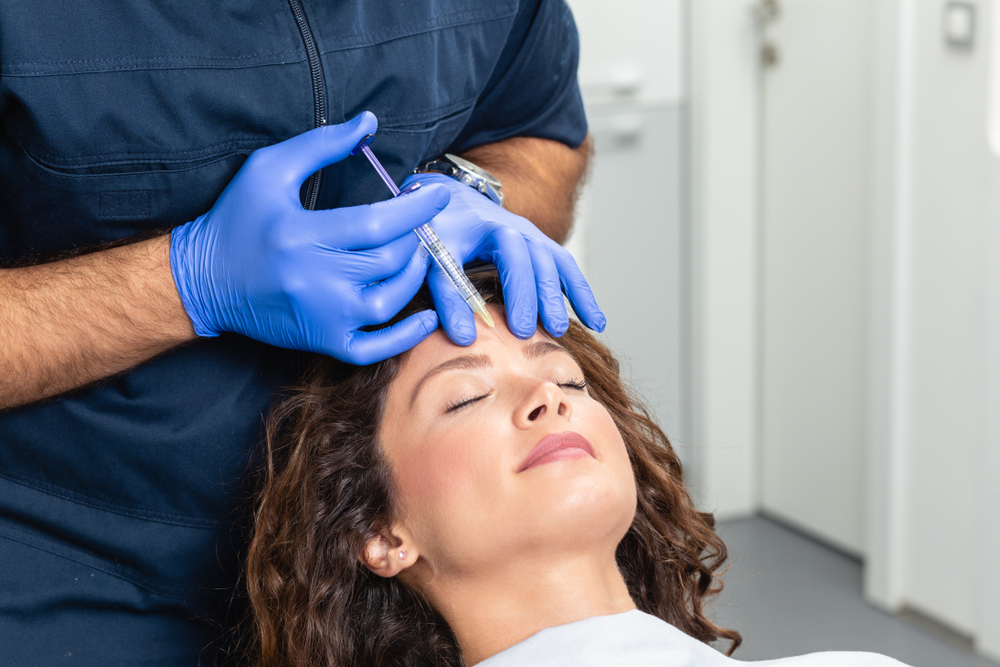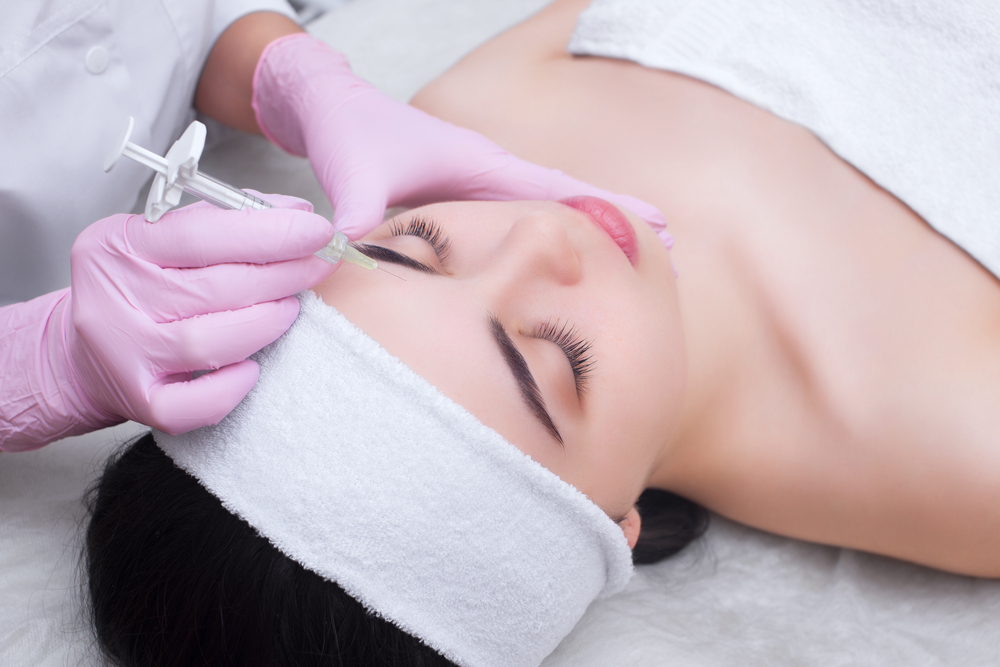- Is an ounce of Botox worth a pound of wrinkle prevention? Experts are divided about whether preventative fillers can stop skin from wrinkling.
- Some studies suggest that pre-wrinkle Botox can help weaken the muscles over time, therefore lengthening the amount of time needed between treatments later on.
- Others believe that there’s no use in treating something that doesn’t exist, and that there isn’t enough data on the subject showing that it works.
What is botox?
Botox is the blockbuster facial injection that reduces the activity of specific muscles, thus smoothing away deep wrinkles and relaxing fine lines. One of the most fascinating things about Botox is that it’s made from one of the most potent toxins on earth, derived from the same bacteria that causes botulism.
Botox has repeatedly been proven to be extremely safe, with very few patients reporting any complications or side effects. That’s because Botox treatments only need a very small, low-risk amount of the bacteria to work. The primary drawback of Botox and other types of skincare injections is that they’re temporary. Most people only see the benefits of a Botox treatment for between three and six months.
What is preventative botox?
Preventative botox is the use of botox by an individual at a relatively young age (late 20s and 30s) — who don’t yet have any serious wrinkles, visible sun damage, or cosmetic skin issues. These younger patients want reliable, preventative treatments to ensure that they don’t develop permanent wrinkles and age spots that could otherwise be avoided.
Finding the right preventative measure for a patient’s specific concern is the key to success. Botox and other dermal fillers are recommended for preventing horizontal lines, resting wrinkles and expression lines that naturally develop with age. Other non-invasive procedures, like chemical peels and laser skin resurfacing, are also used to prevent dull, sagging skin or pigmentation issues caused by excessive long-term sun exposure.
Does preventative botox work?
Second only to topical anti-aging skin treatments, Botox injections are among the most common ways to ward off potential wrinkles. According to the American Society of Plastic Surgeons (ASPS), more and more young people — especially millennials — are requesting Botox to prevent wrinkle formation.
In fact, the ASPS recently reported that 5 percent more patients aged 20 to 29 used botulinum toxin (Botox or Dysport) in 2016 compared with those in that age group who used it in 2015. Nevertheless, the ASPS warns that whether the preemptive measure will actually negate the need for cosmetic procedures in the future isn’t yet known, stating “only time will tell.”
Some dermatologists agree that your 30s is a good time to begin preventative Botox because too much mobility in the muscles can cause premature wrinkling. Botox inhibits muscle movement, therefore preventing wrinkles from forming over the passage of time.
Some also believe that the preventative cosmetic procedure, when used on a regular basis, will make the muscle-relaxing effect of the substance last longer in the future. Dermatologists Heather K. Hamilton and Kenneth A. Arndt published an article in 2013 to this end, arguing that it’s “rarely too early” to get preventative fillers. According to Hamilton and Arndt, early stage treatments can help stimulate collagen production and will lengthen the time needed between treatments in the years to come.
What these doctors are saying, essentially, is that with time the treatment has the power to weaken the muscles and the overlying skin so that later-stage injections are more effective. Ideally, patients who used preventative Botox throughout their 20s and 30s will be less likely to undergo plastic surgery (especially facelifts) or use excessive fillers later in life.
» Connect with our medical review team to know more about preventative Botox.
What are the downsides of preventative botox?
With that being said, plopping yourself down in the Botox chair without so much as a single frown line comes with some drawbacks.
One, of course, is the cost. Most dermatologists in favor of the prejuvention method agree that it’s not necessary to pay preventative injections at the same rate as normal ones. Still, when you’re shelling out $1,000 a year for three treatments, the cost will certainly start to add up.
Other considerations include the relaxation of facial expressions. Many Botox patients regard the expressionless aftermath as a necessary evil in exchange for completely erasing their most stubborn vertical lines and wrinkles. For most young people, however, the idea of going through life with a stiff and expressionless face — if only temporarily — isn’t worth the promise of prevention.
Is botox safe for people in their 20’s and 30’s?
Botox is approved by the U.S. Food and Drug Administration (FDA) for patients aged 18 and older, and can be used by minors with the consent of a parent or legal guardian. It’s sometimes also recommended for the treatment of migraine headaches and excessive sweating. For these reasons, most professionals are prepared to administer the treatment throughout the skin’s pre-wrinkle stage, so long as patients are of legal age.
On the other hand, some doctors will only offer preventative Botox or Dysport if their patient is showing early signs of wrinkle development, such as when small expression lines begin to form around the eyes or mouth.
As with many cosmetic procedures, the treatment is recommended for certain candidates but should be avoided by others. Generally speaking, most patients of any age who are in good overall health are considered suitable candidates for Botox and other facial filler treatments.
When to start preventative botox
As mentioned earlier, most doctors agree that your 30s are the ideal time to begin going under the needle to prevent stubborn, permanent wrinkles from wrecking your still almost perfect skin.
If injected too early, Botox may not work as well as it could later. Some doctors will provide Botox to patients in their 20s, but only if they’re already starting to wrinkle or can demonstrate that their facial expressions are encouraging long-term wrinkles to form.
Dr. Joshua Zeicher, Director of Cosmetic and Clinical Research at Mount Sinai Hospital in New York City, claims there is a relatively simple way to determine when you should start getting preventative injections.
According to Zeicher, if you notice that wrinkles are sticking around when you relax your face (when you’re not smiling or frowning), there’s a good chance that they’ll turn into permanent wrinkles and as such warrant preventative measures. How soon in life people start developing wrinkles varies widely, primarily depending on factors like age, health, lifestyle and the amount of sun damage their skin has so far endured.
According to the American Academy of Dermatology (AAD), the best way to prevent wrinkles and keep your skin in pristine condition isn’t through Botox, lasers or preventative fillers. Rather, it’s simply to wear sunscreen every day and limit the amount of time spent in the sun. New evidence consistently confirms that UV rays are the ultimate enemy of smooth, youthful looking skin.
At the end of the day, so long as you can afford it, preventative Botox treatment is generally considered to be a worthwhile procedure. There are next to no health risks involved, however, for the time being, it’s really more a matter of whether you decide an as yet to be proven effective cosmetic treatment is worth the financial burden that comes with it.
» As always, the best course of action is to talk to a board-certified plastic surgeon or specialist.









